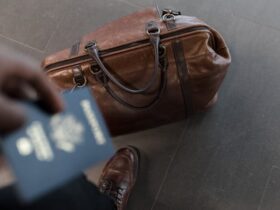Many people feel nervous about getting on a plane. The idea of flying high in the sky can feel scary. But what if flying is actually safer than driving a car? While both aircraft and vehicles carry risks, numbers show that you’re much more likely to get hurt in a car accident than in a plane crash.
Plane crashes are extremely rare and considered highly unlikely. On the other hand, car crashes happen far more frequently and are a more common cause of serious injury or death. That makes driving very much more dangerous than flying. Although we do hear more often about plane crashes on the news, car accidents occur daily, in every city, and hurt many more individuals.
Understanding the probability of a plane crash vs. a car crash can help alleviate some of the fear associated with flying. Despite how unsettling air travel might feel to some, safety records consistently show that flying remains one of the safest ways to travel.
Why Planes Are So Safe
Airplanes undergo rigorous checks before flying. Pilots also receive extensive training and must abide by numerous safety guidelines. Each component of the airplane is inspected before takeoff. Furthermore, air traffic controllers monitor aircraft in the air to assist them in avoiding other planes and adverse weather conditions.
Newer technology has improved flying safety. Modern aircraft feature powerful engines, advanced emergency systems, and equipment that enable pilots to make informed decisions in the air. The U.S. has one of the world’s safest air travel systems. The Federal Aviation Administration (FAA) establishes strict regulations to ensure that operations proceed as planned. Even most plane crashes don’t result in deaths. Commercial airlines in the U.S. have not had a fatal crash in decades.
Why Car Travel Seems Safe (But Is Not)
Individuals travel by car daily, so it appears commonplace and safe. However, cars experience a significantly higher number of crashes than airplanes. Weather, road conditions, drunk driving, speeding, and distractions such as cell phones all contribute to the likelihood of a collision.
And actually, over 40,000 individuals are killed in car accidents within the U.S. each year, as reported by the National Highway Traffic Safety Administration. The majority of accidents occur just a few miles from home. Even taking a short drive can be hazardous. Cars don’t undergo rigorous checks before each journey, unlike airplanes. And not all drivers adhere to safety regulations, which makes the road even more perilous.
Why We Fear Flying More
Although flying is safer, it is still feared by many. This is referred to as “aviophobia” or fear of flying. It typically occurs because:
- Plane crashes, although uncommon, are usually front-page news.
- Individuals feel a lack of control when they fly.
- The thought of falling from the sky is more horrific than a car accident.
Our mind prefers to be afraid of things that are less frequent but sound more melodramatic. That’s why flying will feel alarming, even though it’s safer.
What Reduces Risk Both Ways
Although flying is safer overall, there are things you can do to stay safer no matter how you go:
- In a car, you should always be wearing a seatbelt and not distracted.
- Never drive when you’re sleepy or under the influence.
- On a plane, pay attention to safety briefings and obey airline regulations.
- Be patient and have faith that the staff is trained to deal with issues.
Pilots and drivers are both crucial in ensuring passenger safety. However, due to stringent regulations, frequent checks, and limited scope for human error, flying takes the trophy when it comes to safety.
Final Thoughts
While no way of travel is entirely risk-free, the numbers make one thing clear: flying is one of the safest ways to go from place to place. The next time you’re afraid to fly, remember that the road might be more dangerous than the sky.







